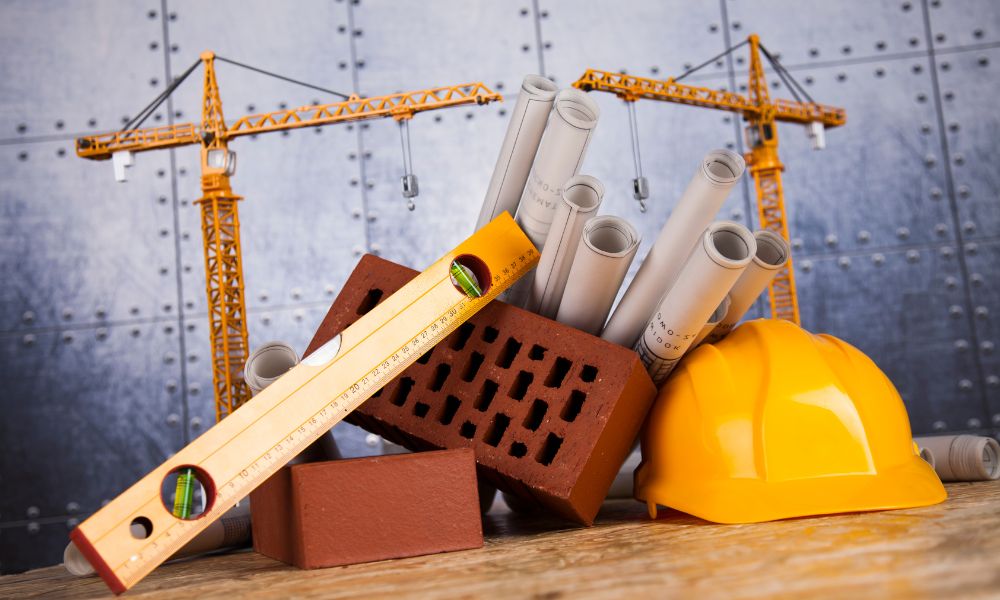In the world of quantity surveying (QS), understanding the distinction between tendering and estimating is crucial. Both processes play a significant role in the lifecycle of a construction project, guiding decisions and shaping project outcomes. While tendering and estimating often overlap, each has distinct objectives and methods that quantity surveyors need to master.
This blog explores the key differences between tendering and estimating, their importance in quantity surveying, and how each process influences project success. Whether you’re new to QS or looking to refine your skills, understanding these differences will help you make informed decisions and improve project efficiency.
What is Estimating in Quantity Surveying?
Estimating is the process of calculating the expected costs for a construction project. Quantity surveyors develop an estimate by analyzing project specifications, labor, materials, equipment, and other factors to arrive at a preliminary cost.
- Purpose of Estimating: The primary goal of estimating is to provide the client with an accurate prediction of project costs, which helps in budgeting and planning.
- Estimating Techniques: Quantity surveyors use various estimating methods, including unit cost, square foot, and detailed takeoff. Each method is suited to different project stages and accuracy requirements.
- Accuracy in Estimation: The accuracy of an estimate depends on the quality of available information. Early estimates, like feasibility studies, may be broad, while later estimates are more detailed and precise.
In short, estimating is about calculating what a project is expected to cost, helping clients understand the financial implications and make informed decisions.
Types of Estimation in Quantity Surveying
Different types of estimates are used depending on the project stage, scope, and available information:
Preliminary Estimate
A preliminary estimate provides a rough idea of project costs. It is typically used in the early stages to help clients assess the feasibility of the project.
- When to Use: Early project stages when limited information is available.
- Accuracy Level: Broad, with allowances for adjustments as details develop.
Detailed Estimate
A detailed estimate is more comprehensive, based on a complete design, specifications, and drawings. It includes a breakdown of costs for materials, labor, equipment, and overheads.
- When to Use: After project specifications and design are finalized.
- Accuracy Level: High, allowing clients to make budget decisions with confidence.
Cost Plan
A cost plan helps the client control costs throughout the project lifecycle. It compares estimated costs with actual costs, helping to track any budget deviations.
- When to Use: Throughout the project to monitor costs against the initial estimate.
- Accuracy Level: Ongoing adjustments for accurate budget management.
Each estimate type serves a unique purpose, guiding clients through different project stages and supporting better budgeting and financial control.
What is Tendering in Quantity Surveying?
Tendering, on the other hand, is the process of inviting contractors to bid on a project and selecting the best proposal. It’s a competitive process where contractors submit offers, including costs, timelines, and methods, to complete the project.
- Purpose of Tendering: The main objective is to find the most suitable contractor who can meet the project’s requirements while providing the best value.
- Tendering Methods: Common methods include open, selective, and negotiated tendering. Each approach varies in transparency, competition, and suitability depending on the project.
- Tender Document Preparation: Quantity surveyors prepare essential documents for tendering, such as the Bill of Quantities (BoQ) and project specifications, which guide contractors in their bid preparation.
In tendering, quantity surveyors facilitate the process to ensure that clients receive competitive, fair bids that meet their project requirements and budget.

Types of Tendering Methods
Choosing the right tendering method depends on the project’s complexity, client preferences, and transparency requirements. Here’s a brief overview of the main types of tendering in quantity surveying:
Open Tendering
Open tendering allows any qualified contractor to submit a bid, promoting transparency and competition. It’s commonly used in public sector projects to ensure fairness.
- When to Use: Public projects or large-scale developments.
- Advantages: High competition, which often leads to cost-effective bids.
Selective Tendering
In selective tendering, only a prequalified group of contractors is invited to submit bids. This approach ensures that only capable and experienced contractors participate.
- When to Use: Complex or specialized projects.
- Advantages: Ensures quality by inviting only qualified contractors, reducing the need for extensive evaluation.
Negotiated Tendering
Negotiated tendering involves direct negotiations with a preferred contractor. It is often used for projects requiring a high level of collaboration or when a trusted relationship exists.
- When to Use: Specialized or high-collaboration projects.
- Advantages: Faster decision-making, with a focus on quality and alignment with client goals.
Framework Tendering
Framework tendering involves setting up a long-term agreement with multiple contractors, allowing for quick contractor selection based on specific project needs.
- When to Use: For clients with multiple, similar projects over time.
- Advantages: Saves time on repeated tender processes and promotes consistency in project execution.
Each tendering method has unique benefits and is suited to different project types, allowing clients to select contractors effectively.
Key Differences Between Estimating and Tendering
While both estimating and tendering are critical in the construction process, they serve different functions and objectives. Here are the main distinctions:
Purpose
- Estimating: Focuses on calculating the projected cost of a project to guide budgeting and planning.
- Tendering: Involves finding and selecting a contractor through a bidding process, ensuring the client gets the best value.
Stage in the Project Lifecycle
- Estimating: Occurs in the early stages of a project to establish an initial budget.
- Tendering: Takes place after the design and specifications are finalized, inviting contractors to bid on executing the project.
Documentation
- Estimating: Involves creating cost estimates, often using cost plans, preliminary estimates, or detailed estimates.
- Tendering: Involves preparing a Bill of Quantities, project specifications, and contractual terms that guide contractors in submitting their bids.
Participants Involved
- Estimating: Primarily handled by quantity surveyors who analyze project costs, materials, labor, and equipment.
- Tendering: Involves quantity surveyors, contractors, and sometimes project managers or procurement teams, each playing a role in the bid evaluation and selection.
Decision Outcome
- Estimating: Results in a projected cost that helps the client make budgeting decisions.
- Tendering: Results in contractor selection, allowing the client to move forward with project execution.
How Estimating and Tendering Work Together
Although different, estimating and tendering are interconnected processes in quantity surveying. Here’s how they work together:
- Foundation of Tendering in Estimation: Accurate estimates create the foundation for tendering by establishing a realistic budget that aligns with the client’s expectations.
- Guidance for Contractor Bids: Cost estimates guide contractors in preparing bids that meet budget constraints while providing quality work.
- Managing Expectations: Both processes help manage client expectations regarding project scope, timelines, and costs, creating transparency from planning to execution.
By understanding both estimating and tendering, quantity surveyors help clients make informed decisions, ensuring project success through well-calculated budgets and effective contractor selection.
The Importance of Estimating and Tendering in Quantity Surveying
Mastering estimating and tendering is essential for quantity surveyors, as each process adds value to construction projects:
- Cost Control: Estimating helps prevent budget overruns by providing accurate cost projections and financial planning.
- Value for Money: Tendering ensures that the selected contractor offers the best balance between cost and quality, protecting the client’s investment.
- Project Efficiency: Both processes contribute to a streamlined project execution, minimizing delays and reducing financial risks.
- Stakeholder Confidence: Clients and stakeholders gain confidence in the project’s success when quantity surveyors manage estimating and tendering effectively.
These processes are integral to quantity surveying, enabling quantity surveyors to provide clients with accurate financial insights and reliable contractor recommendations.
Conclusion
In quantity surveying, understanding the key differences between tendering and estimating is crucial for effective project management. Estimating focuses on determining project costs, guiding clients in budgeting, while tendering is about contractor selection, ensuring value and quality for the project. Together, these processes form the backbone of project planning and execution, supporting quantity surveyors in delivering successful construction outcomes.
For those pursuing a career in quantity surveying, mastering the skills of estimating and tendering is essential. By enhancing your understanding of these processes, you can add significant value to construction projects and build a successful career.
Looking to Master the Skills of Estimating and Tendering in Construction?
Enroll in our Quantity Surveying Course Online and gain in-depth knowledge of essential quantity surveying practices, from cost estimation to tender preparation. Perfect for beginners and professionals alike, this course provides real-world applications and insights to help you excel in quantity surveying.
Start your journey today!




